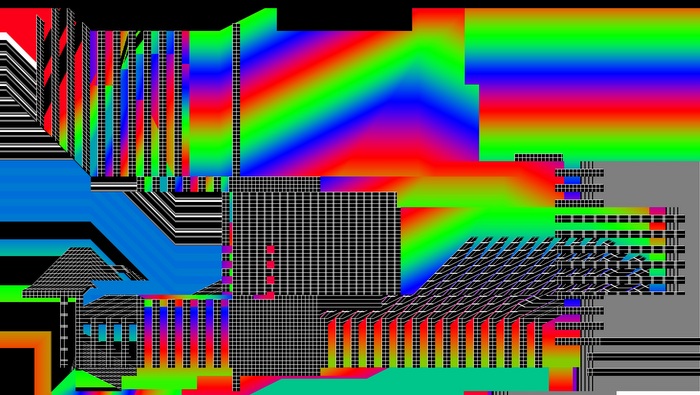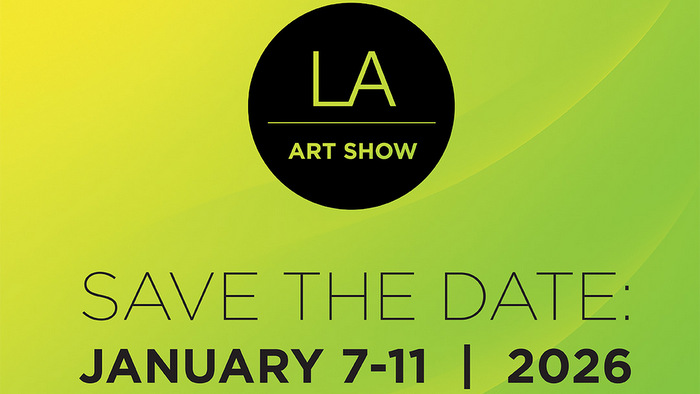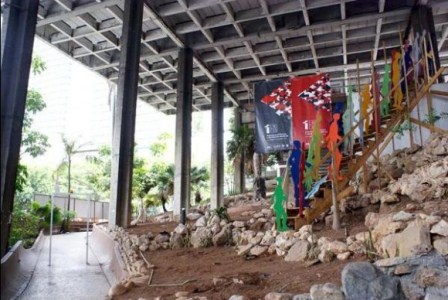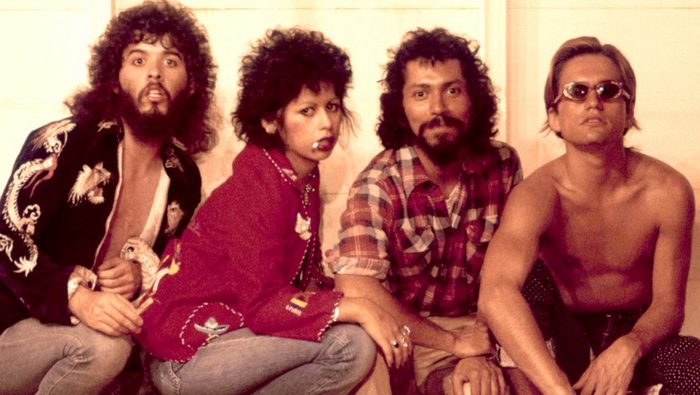By: Clotilde Serrano
Between…
It just surprises me… well, I don’t understand much… you know, it makes you think and… she’s so determined to exchange things; it’s super!
Those were the comments of four youngsters as they leave the exhibition hall. Contemporary art is sometimes difficult to understand, but the dialogue it establishes with the audience is enriching, challenges our way of thinking and forms part of our imagination.
Several works, mainly installation, video art and performance, foster an active participation between the artist and the audience.
In Entre, Dentro, Fuera (Between, Inside, Outside), by Dannys Montes de Oca and Royce Smith, common points can be seen between the work of Cuban and US artists.
Whether that was the initial idea of the proposal or not, the couple certainly took into consideration the possibilities of the place the exhibit is located in: Pabellón Cuba – a space full of history within the Cuban visual arts as in 1967 it hosted the Salón de Mayo, of the French Modern Art Museum, and became the first site to welcome the event in the American continent.
The Pabellón, located in one of the most popular arteries of the city and a place where several young art projects meet – because it’s also the National seat of the Hermanos Saiz Association – fosters the exhibition of projects made by and for the youth.
Inside…
Seven Cuban artists and their seven US counterparts present a proposal that combines different artistic expressions to express an idea, a state of mind, feelings, different edges of the conceptual art, materialized in very contemporary expressions that include more conventional elements, such as drawing, painting and sculpture.
But the most important thing about Entre, Dentro, Fuera is the integration of different artistic expressions to create a dialogue between the artist and the audience.
The piece Contacto (Misa de cajón para Ana Mendieta), by Cuban Susana Pilar Delahante, which opened the exhibit, was an example of this creative interaction. The proposals Delahante includes in this project stress the idea of the way everyday-life issues are handled upon the basis of multiple creative preoccupations. In one of them, Lo llevamos rizo, the artist summons a contest for natural Afro hair, in Afro, braiding and dreadlocks styles. Workshops and the lecture Mirarse ante el espejo, estética e identidad de la mujer afrocubana, by Aldeide Delgado, are also added. But also interesting is her performance El Tanque, where she shows the use of water and heated comb, traditional elements used for years to straighten curl hair – something the artist will personally show.
Hecho en Cuba, by Stephanie Syjuco, a Philippine artist based in the US, allows the exchange between the audience and the author, as her proposal fosters visitors to change personal objects for cloth-made bags, under the sign-offer Cambiemos algo. Cuban Levi Orta, for his part, presents the work Capital-Cultura, a stock exchange in which businesses are registered and which functions as a mediator between these and the clients – very significant now that the country undergoes private ways of investment.
The performance T-Pox Toque, by Omar Estrada, creates an interdisciplinary dialogue between visual arts on the one side, and music, science and religion on the other.
With this proposal, Estrada, accompanied by a group of specialists, exchanges with the audience about his everyday life experiences, and includes the musical group Juego de Manos, directed by David Álvarez. The artist also exhibits his work ¿Por qué la luna?, an e-game that allows the audience to interact with historical events that took place in the 20th century, and which demonstrates the relationships of power established between the most powerful nations in their intention to be the first to get to the satellite of the Earth.
Glenda Salazar, also Cuban, proposes Proyecto Border, a series of paintings of Cuban-native plants, with the idea that the audience take with them some seeds to plant them and thus recover the trees the society so much needs.
Adonis Ferro, together with artists Denis Peralta and Maysabel Pintado, exhibits Desconcierto. Divided in three parts and written by Ferro, these performances-productions tell a story from an empty stage, something that causes confusion and surprise among the audience. This work, one of the most interesting of the project Entre, Dentro, Fuera, is also an example of the dialogue established between the audience and the works they see.
Outside…
Entre, Dentro, Fuera, is a space of confrontation that allows enjoying exhibits from different points of view. All the proposals herein described cannot be appreciated in only one visit. They will be shown as part of the Biennial until June 22. Still, many of the activities, though permanent, take place at a unique and unrepeatable moment and are constantly renewed to maintain the vitality of the idea. You are thus invited to visit this project and see that art, an enriching component of thought, can transform our existence.


Source: Cubarte
Related Publications

Zero 10 at Art Basel Miami Beach: A New Space for the Digital Era of Art
December 03, 2025













